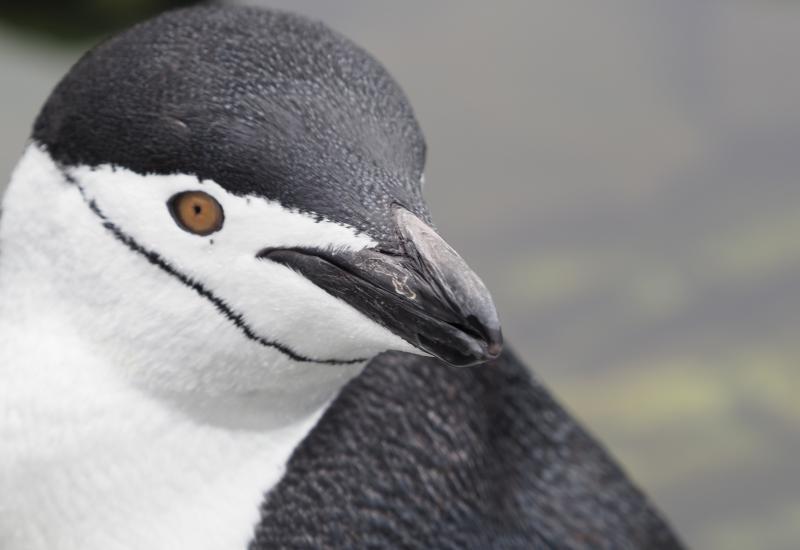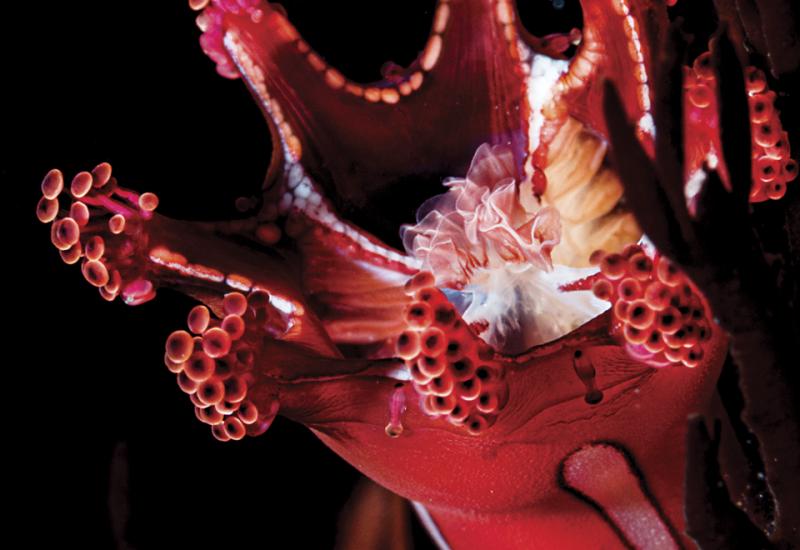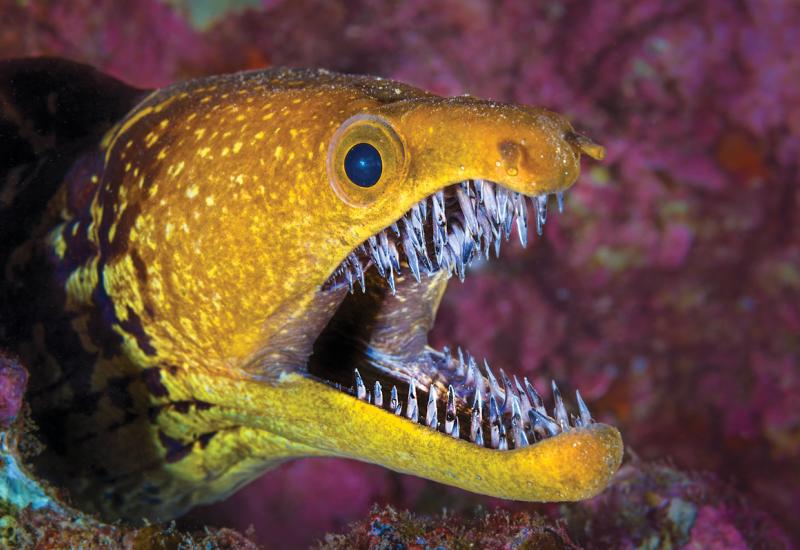Meeting Mr. Big: A Gallery of Big Animal Encounters
For many divers, one of the biggest thrills of diving is having a large-animal encounter — and if that encounter is interactive, where the animal seems to be equally interested in us, there can be magic under the surface.
I have always been up for seeing a manta ray, dolphin or turtle, but I must admit that, being of the Jaws generation, in my early diving days I was pretty phobic about sharks. Ironically, I had about 50 dives before I finally saw one — a big hammerhead sauntering by in San Salvador, Bahamas. By then, I had come to realize that seeing a shark was pretty special — something about which to be thrilled, not terrified.
Since those early, fearful days, I have ironically evolved into a shark-loving diver. I’ve even made several trips to a couple of global shark ‘meccas’ — the Galapagos Islands and Cocos Island in Costa Rica, with the expectation that I would dive with big animals — and hopefully lots of them. I wasn’t disappointed. Schooling hammerhead sharks appeared in both locations, plus large aggregations of big Galapagos sharks at Wolf Island.
And then there was the behemoth: Mr Big — the largest fish in the sea. I have been fortunate enough to have several encounters with these gentle giants, all at Darwin Island in the Galapagos. Whale sharks, unlike many of their carnivorous cousins, are plankton feeders and offer no harm to humans.
In all these experiences with sharks, numbering in the many hundreds of animals, if not thousands, I have never once felt threatened. I am pretty clear that sharks aren’t all that interested in us, and, unlike some of my experiences with underwater mammals, there is no sense of interaction or even curiosity. They are just there, doing what sharks do, which is generally cruising around, looking for easy pickings and coming into the reef periodically to get deloused at cleaning stations.
The only times I have felt that the encounters were a little too frisky have been during the legendary whitetip shark night dive at Manuelita Island in Costa Rica, where there is truly a riot of marauding sharks hell bent on hunting, and during some human-orchestrated shark feeds, where someone baits the sharks to bring them in so divers can get a closer look. During chumming, sharks can become quite pushy and persistent. I have come to believe that baiting sharks is not such a great practice — I think it creates a link in a food chain that is unnatural, and may encourage sharks to associate humans with food. That is not a good thing. I’ve dived at sites with operators who don’t feed sharks, and as soon as the boat pulls up to the mooring it’s like someone rang the dinner bell — the sharks come right up to the boat, much like Pavlov’s dogs salivated when a bell was rung. It can be exciting, but it’s not natural behavior. Sharks are normally fairly wary, and most tend to make a wide berth around underwater humans.
I can’t write about sharks without sharing a few words about the rapid and alarming decline of shark populations on the planet. It is well documented that sharks are being fished en masse, solely for the lucrative sale of their fins, with the rest of the animal being wastefully discarded. It is happening in oceans around the world. This is most shockingly evident in Asia. In my seven trips to Indonesia and Thailand thus far, I’ve only seen a handful of sharks. I’ve dived many ‘healthy’ coral reefs, in many regions, and where sharks should be abundant, they are instead worryingly absent. My trips to Galapagos and Cocos all happened more than six years ago when there was still apparently a very robust population of sharks. Since then, there have been many reports that rampant illegal poaching is occurring in both these locations, with the governments (Ecuador and Costa Rica respectively) that are custodial of these supposedly protected areas turning blind eyes to the issues.
Read: China Bans Shark Fin Soup from Weddings
There is a lot of media attention currently focused on shark finning, and several great non-profits groups are helping to increase consumer awareness in countries and communities in which shark fins are a delicacy. However, it remains uncertain whether the slaughter can be stopped in time, before many species of sharks become virtually extinct. In fact, now manta ray and whale-shark populations are being decimated because there are so few smaller sharks left, and the insatiable demand for shark fin in a bowl of broth leads fishermen to cross over into catching these species.
The gallery I’ve included in this photo essay attempts to share some of the very memorable moments I’ve had in the ocean with big animals — sharks, rays, turtles, sea lions and a really wild encounter with a very large giant Pacific octopus. There are still so many animals that I would love to see while diving — whales, dugongs (similar to the manatees of Florida, which I’d also love to see), dolphins and many more varieties of sharks.
But I think I’ll take a pass on diving with saltwater crocodiles.
More from Judy G
Cozumel's Most Fascinating Creatures | Cold Water Rocks! | Diving Indonesia's Komodo National Park
For many divers, one of the biggest thrills of diving is having a large-animal encounter — and if that encounter is interactive, where the animal seems to be equally interested in us, there can be magic under the surface.
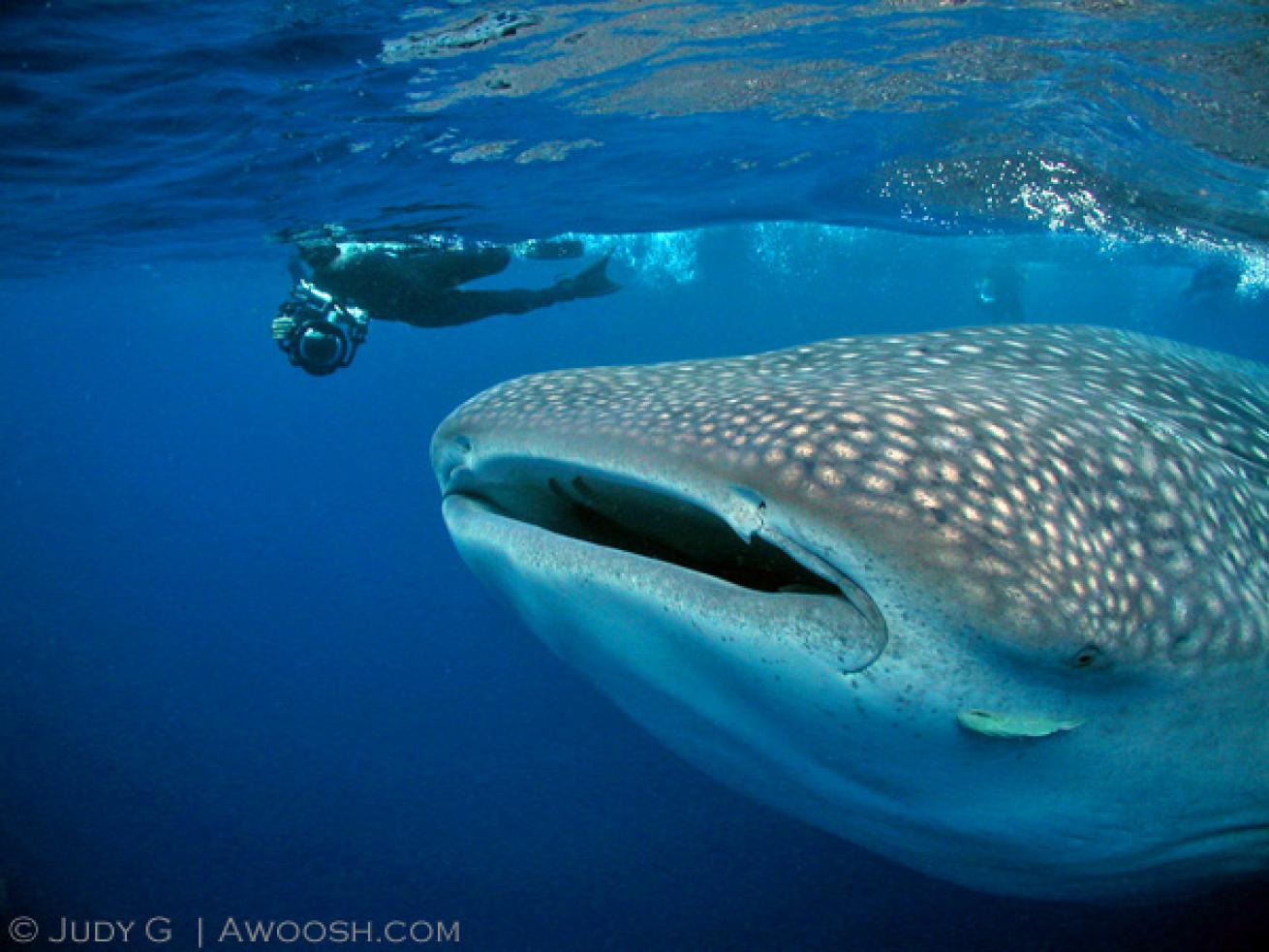
Judy GWhale shark diving
I captured this image on my first trip to the Galapagos, way back in 2003. We saw a couple of these massive beasts during the dive — truly, they were so huge that they blocked the light as they passed over us. Whale sharks like to swim into the current when they are feeding. Opening their cavernous mouths, they suction in water and filter out the plankton on which they feed. We peeled off our gear, climbed into the panga and were on our way back to the live-aboard boat when the dinghy driver pointed out this whale shark feeding at the surface. Most of us rolled back into the water, with our cameras but without our BCs and tanks, and spent at least 20 minutes swimming on the surface with this big boy (or gal). I got lucky and saw the set up for this image just before it happened. The diver in the background is a nice guy named Todd, aka Twang in Scubadiving.com’s Diver to Diver community.
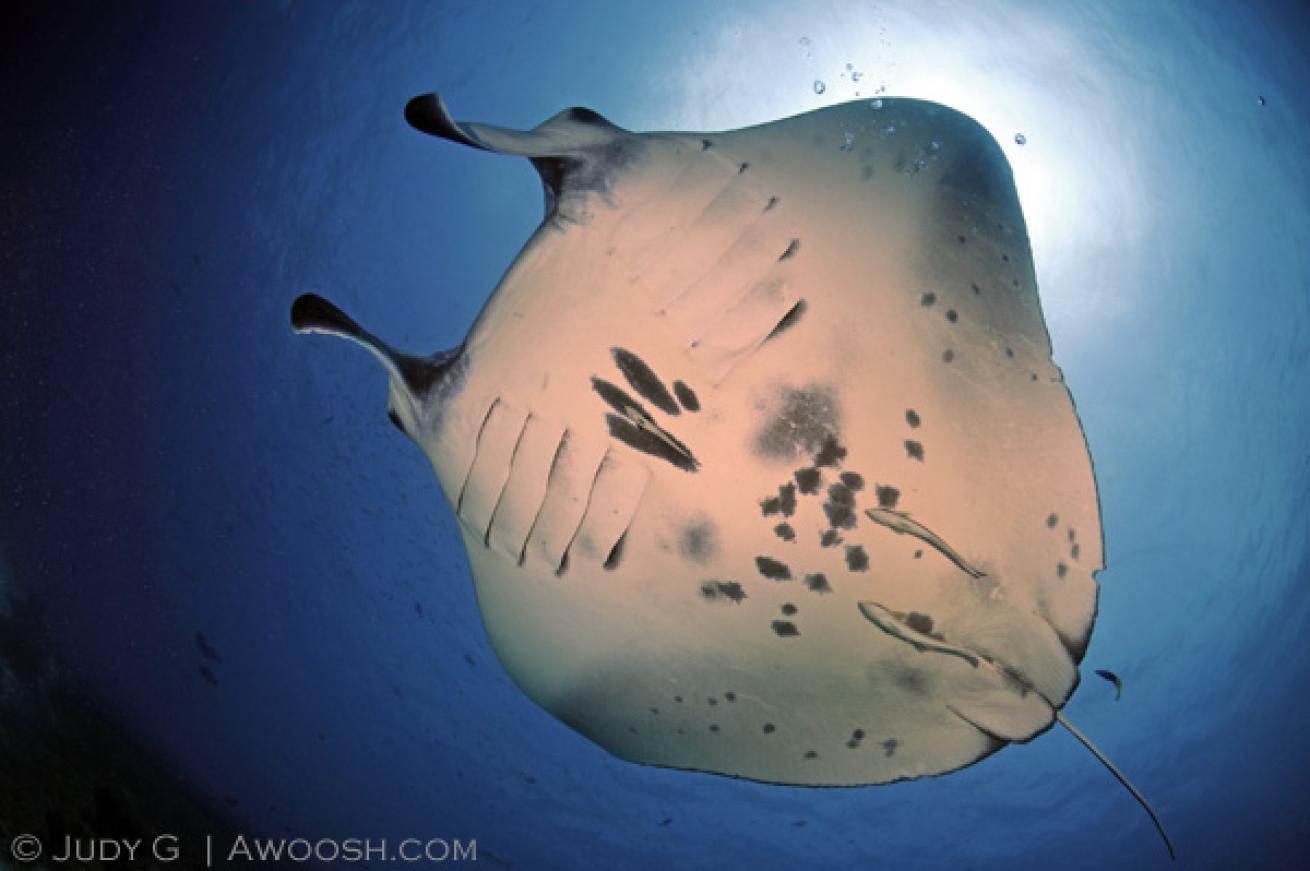
Judy GManta ray diving
I love manta rays. Graceful, otherworldly, sometimes curious and interactive, it is always a thrill to see one. I’ve seen them in Hawaii, Indonesia, Thailand and Australia. This image was captured at a site called Manta Sandy in Raja Ampat, Indonesia. This site is a cleaning station where the mantas sometimes come in to have their parasites removed by little fish. On this day we got lucky, and not only did the mantas show up, but they orbited around us, again and again, giving us all a chance to have great close-up views of these beautiful beasts. Mantas, like whale sharks, are also plankton feeders.
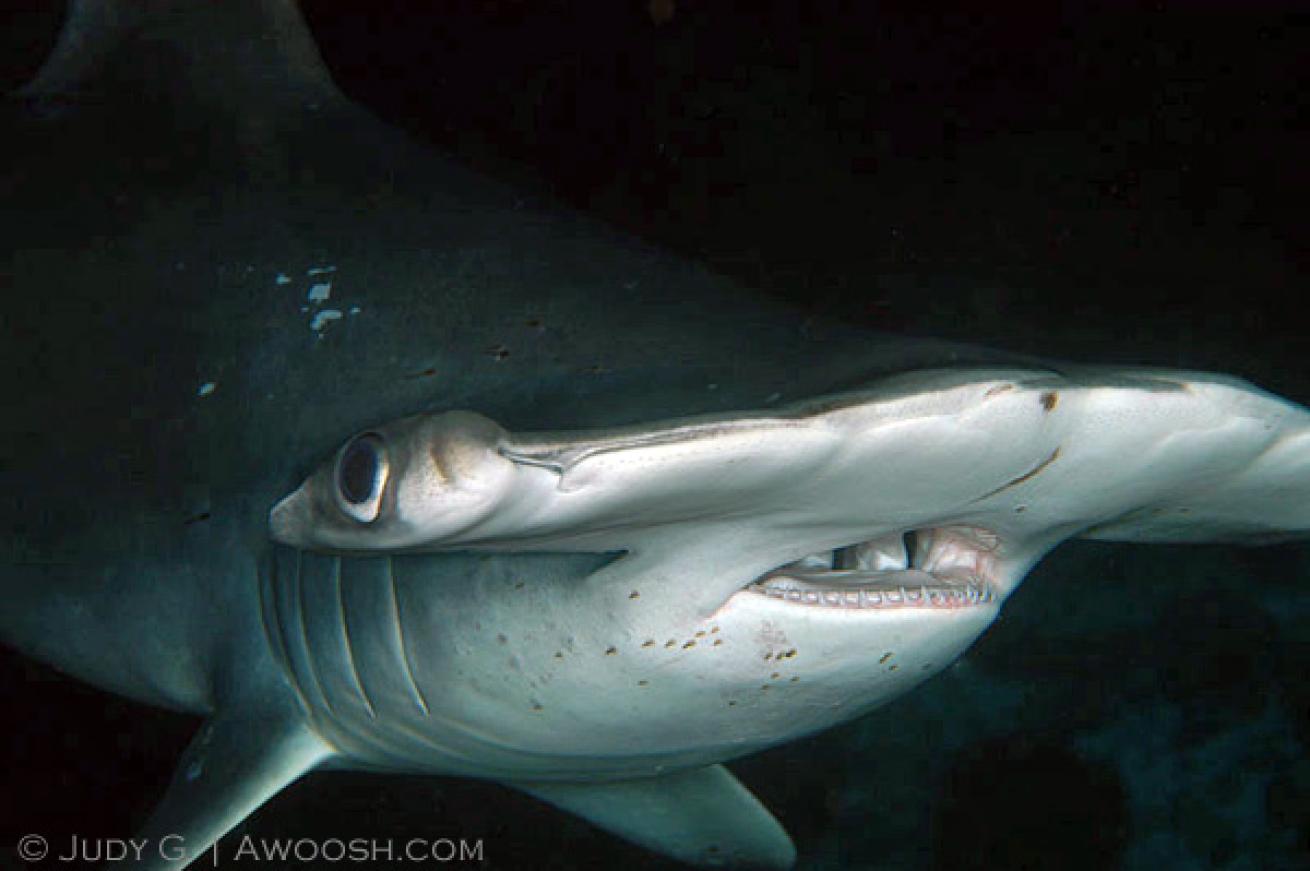
Judy GHammerhead shark diving
I captured this image at Cocos Island, Costa Rica. We had been seeing a lot of hammerhead sharks — constellations of them on some sites, and it made for exciting diving. The hammerheads were orbiting off the reef, and occasionally one would come in to get cleaned. We all found out the hard way that hammerheads do not like divers’ bubbles, and as the week went by, I became increasingly frustrated that I could never get a close shot of one. For whatever reason, when this one turned and came in to the reef, it just kept coming, and coming. I fired off a shot, and still it came toward me. This shark almost touched my camera before it veered away. Awesomeness!
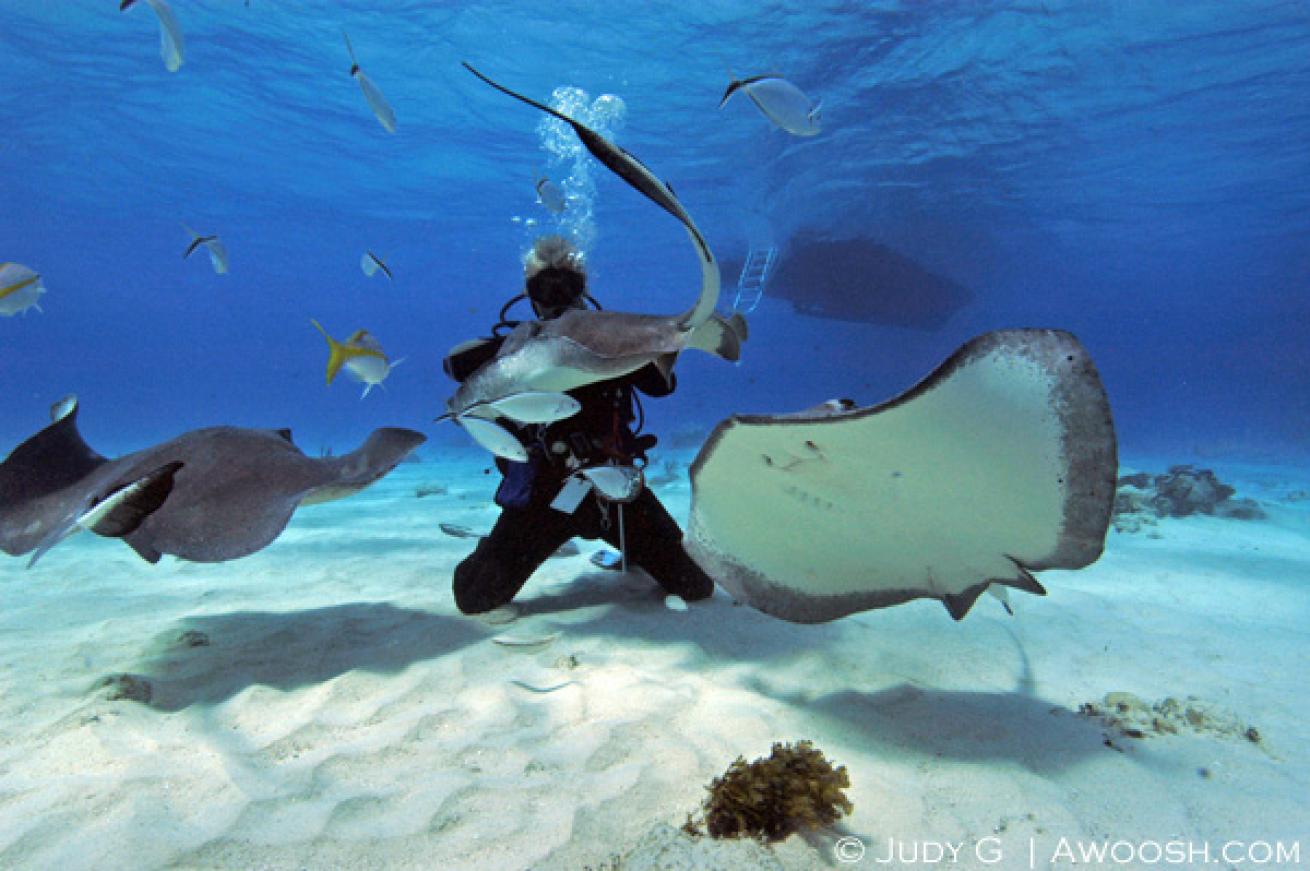
Judy GStingray diving
Stingray City in Grand Cayman is an easily accessible place to have interactions with fairly large animals. In fact, if yours is anything like my experience, you will be somewhat molested by them. Snorkelers and divers can enjoy meeting stingrays at this shallow site. Some of the operators hand feed them squid (not recommended unless you are trained to do it — they’ve got strong suction mouths that can give a wicked hickey) and then the show is on. Large stingrays zoom in from everywhere, and they are not shy. It’s fun, and safe as long as you stay planted on the sand or well above them on the surface. Their tail stingers are potentially dangerous (think: Steve Irwin), but only if you are right above the animals where they may mistake you for a predator. Stingrays are pretty common critters, but are usually skittish when divers approach. They are also excellent at camouflaging themselves on sandy bottoms, where they dig themselves in, lurking, waiting for prey to swim by. This is the only occasion I’ve seen them out and about like this.
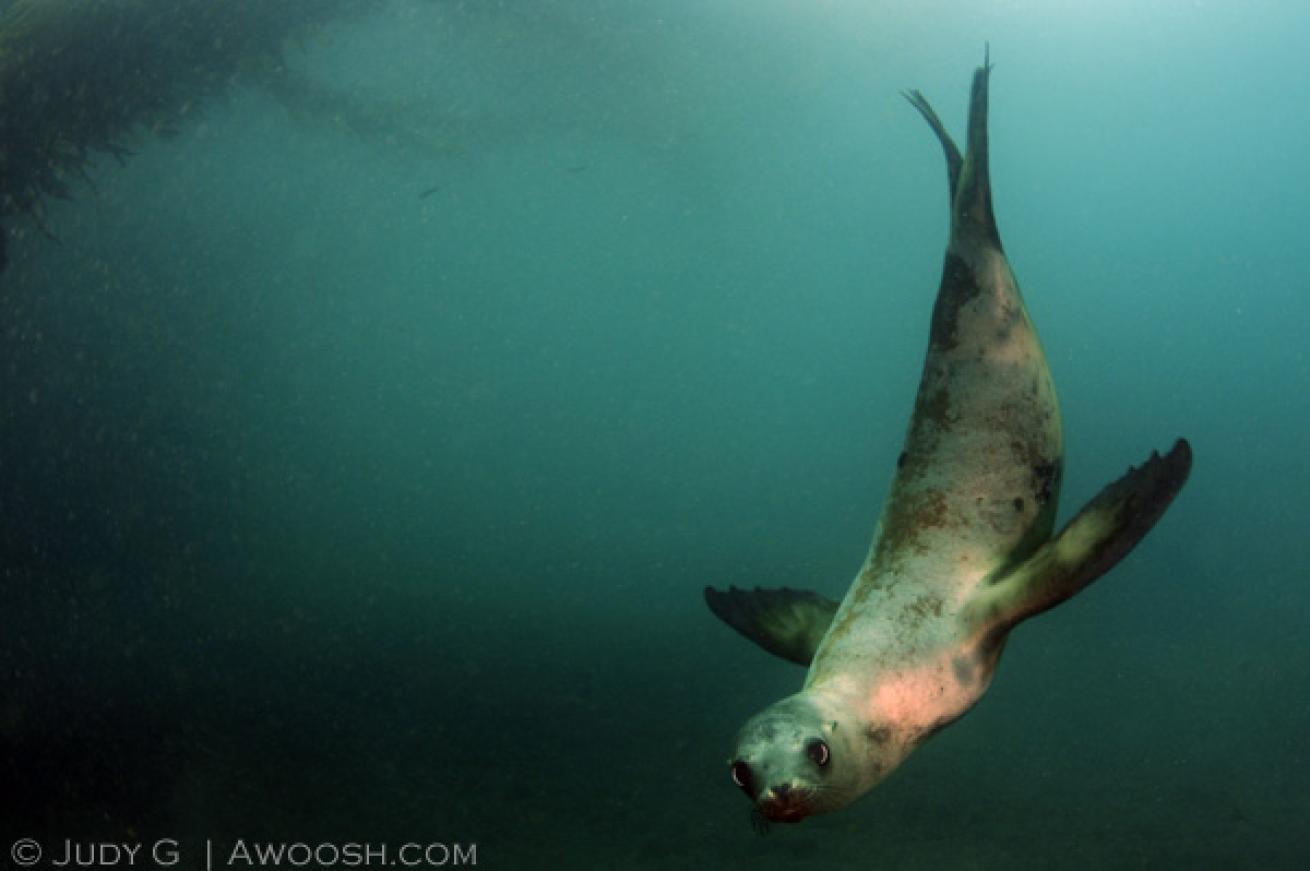
Judy GSea lion diving
My first exciting encounter with big animals was on Mr G’s and my very first dive trip — to the Sea of Cortez, between the mainland of Mexico and the Baja peninsula. I was a pretty fearful diver in those early days.
On the first of several dives at a rocky islet we saw these dogs of the sea whizzing past, barrel rolling by and giving us the once over with their big, bulbous eyes. I imagine now that they must have been laughing at me as they startled me with every high-speed pass. Later in our trip, as I relaxed into the experience, the magic happened — we made eye contact and then they came back to take a closer look. Suddenly there were several, many, swooshing and spinning as if performing a sea lion ballet — then racing to the surface to suck in a breath of fresh air before coming back down to continue to the show. It was glorious, and it was then that I truly let go of my fear of diving and fell in love with it. In years to come, I would have similar experiences diving with sea lions diving in the Channel Islands of California, Galapagos and British Columbia.
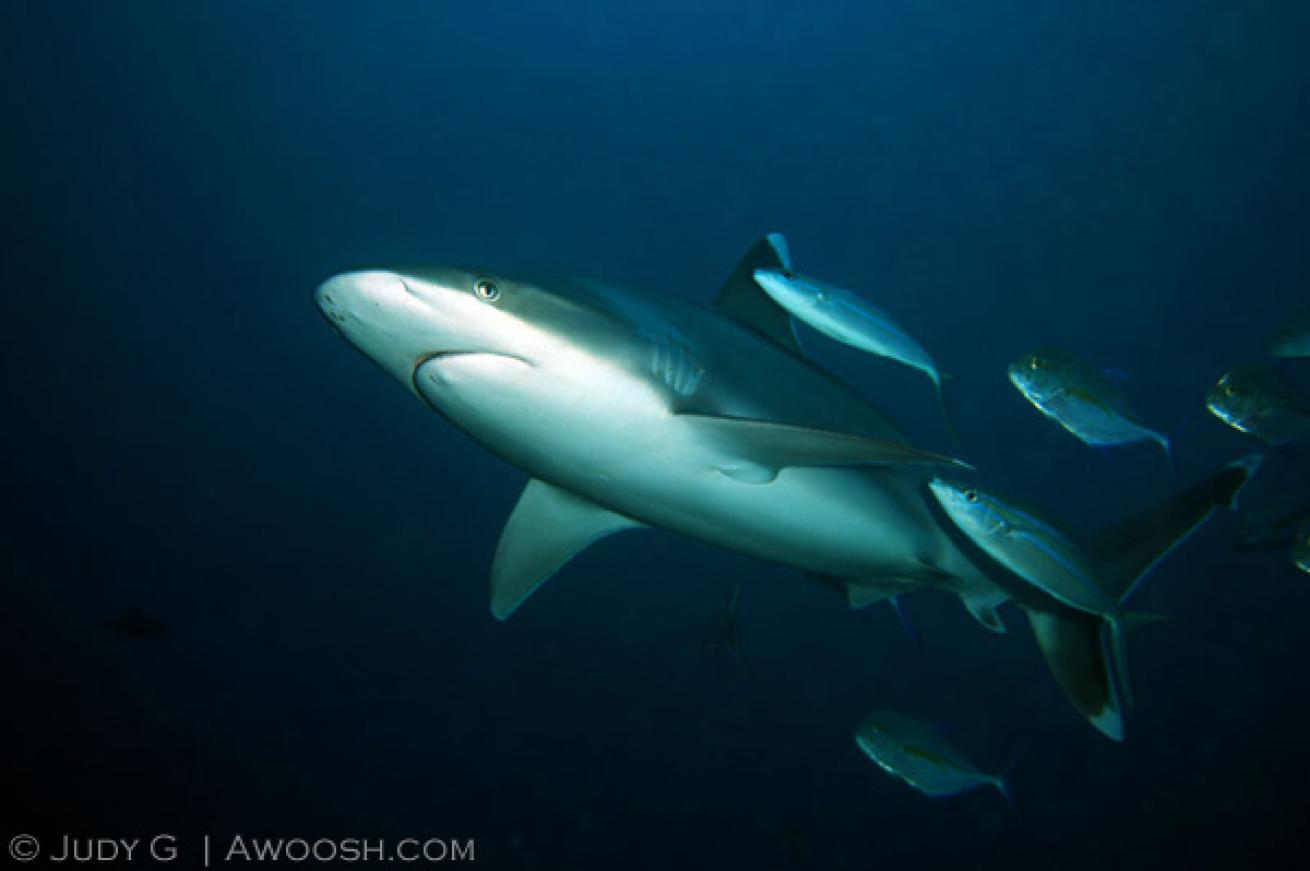
Judy GSilvertip shark diving
This was the first and only time I have seen this variety of shark, and it happened at Cocos Island, Costa Rica. These are big, chunky sharks, and there were a couple of them, swimming a fairly predictable pattern across a fairly shallow bottom, so we had a nice long interlude to settle in and watch them. The visibility was not great, but reasonable enough that I was able to get this fairly clear shot.
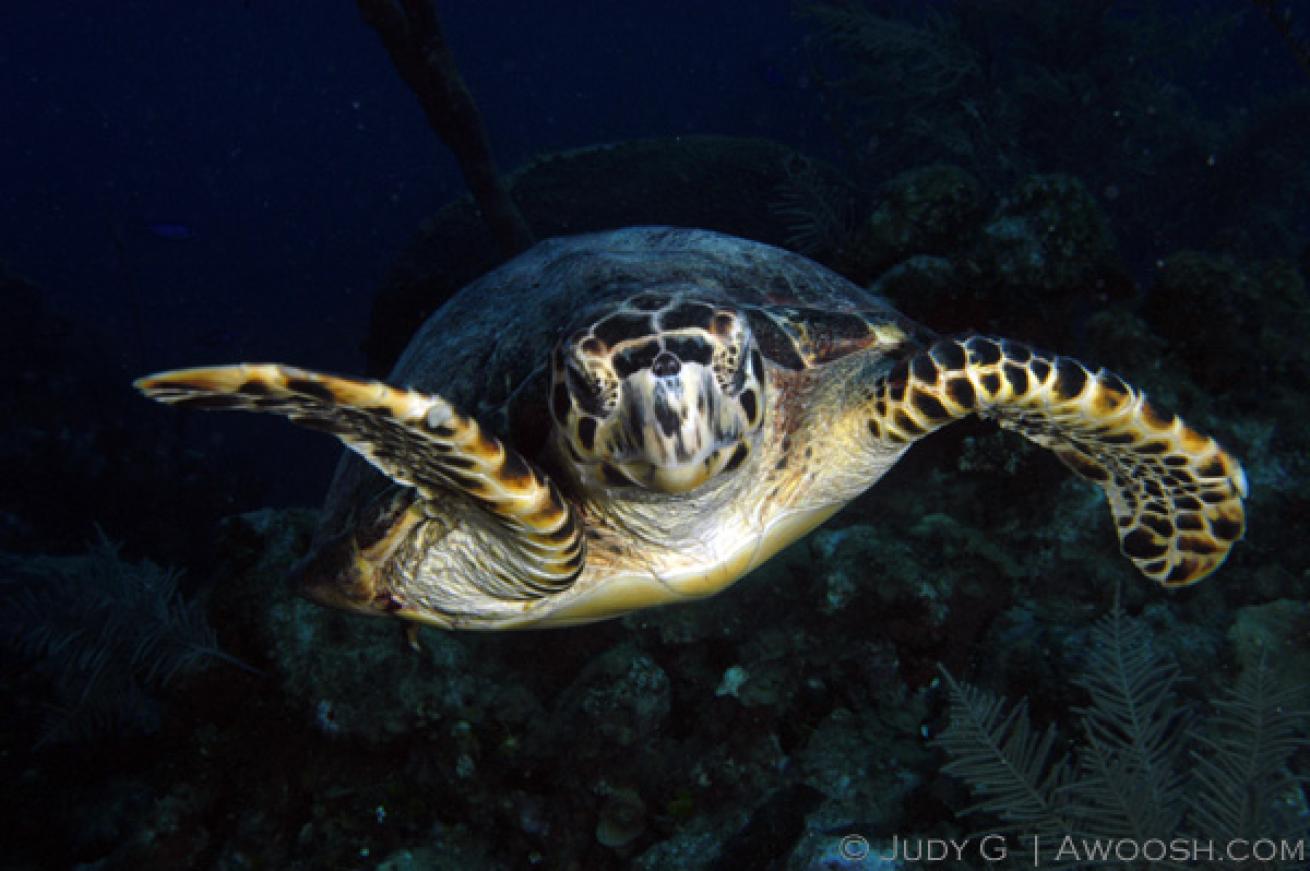
Judy GSea turtle diving
Turtles are a fairly common sight in most warm-water locations where I have been diving, although they are noticeably less abundant in areas of the world where they are consumed by humans as food. Some turtles can be quite curious, and will swim right up to divers to check them out. Others are more easily spooked, and will hightail it away as soon as divers approach. This turtle seemed unafraid and swam right up to my camera. Dude!
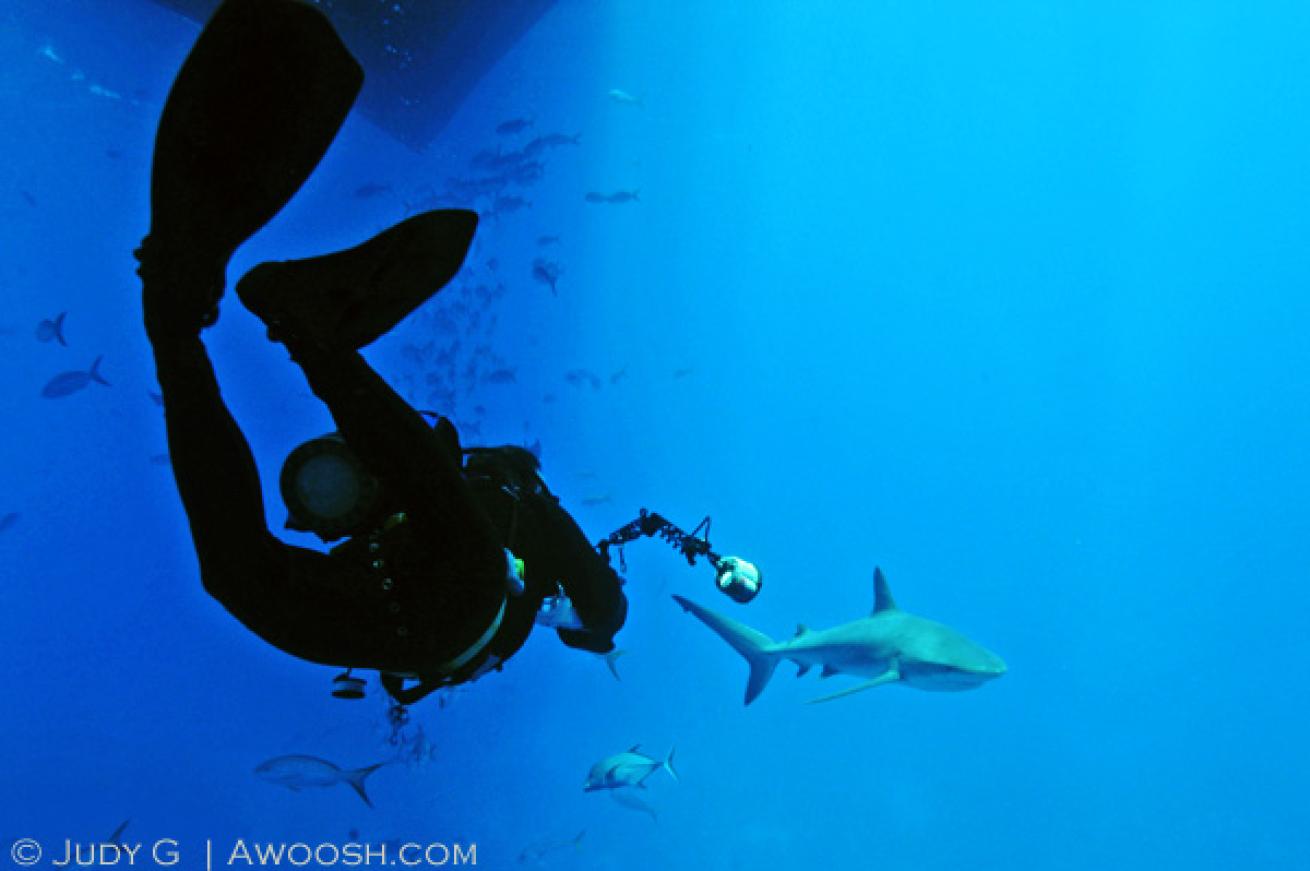
Judy GShark diving
As I mentioned in the essay, in locations where shark feeding happens, the sharks tend to hang around under the boat, hoping for handouts. This image is of my good bud Chris, lining up to take a shot of one of these brazen beasts in Turks & Caicos. This is a Caribbean Reef Shark, a variety of shark that is common to this area, and can grow to be quite large.
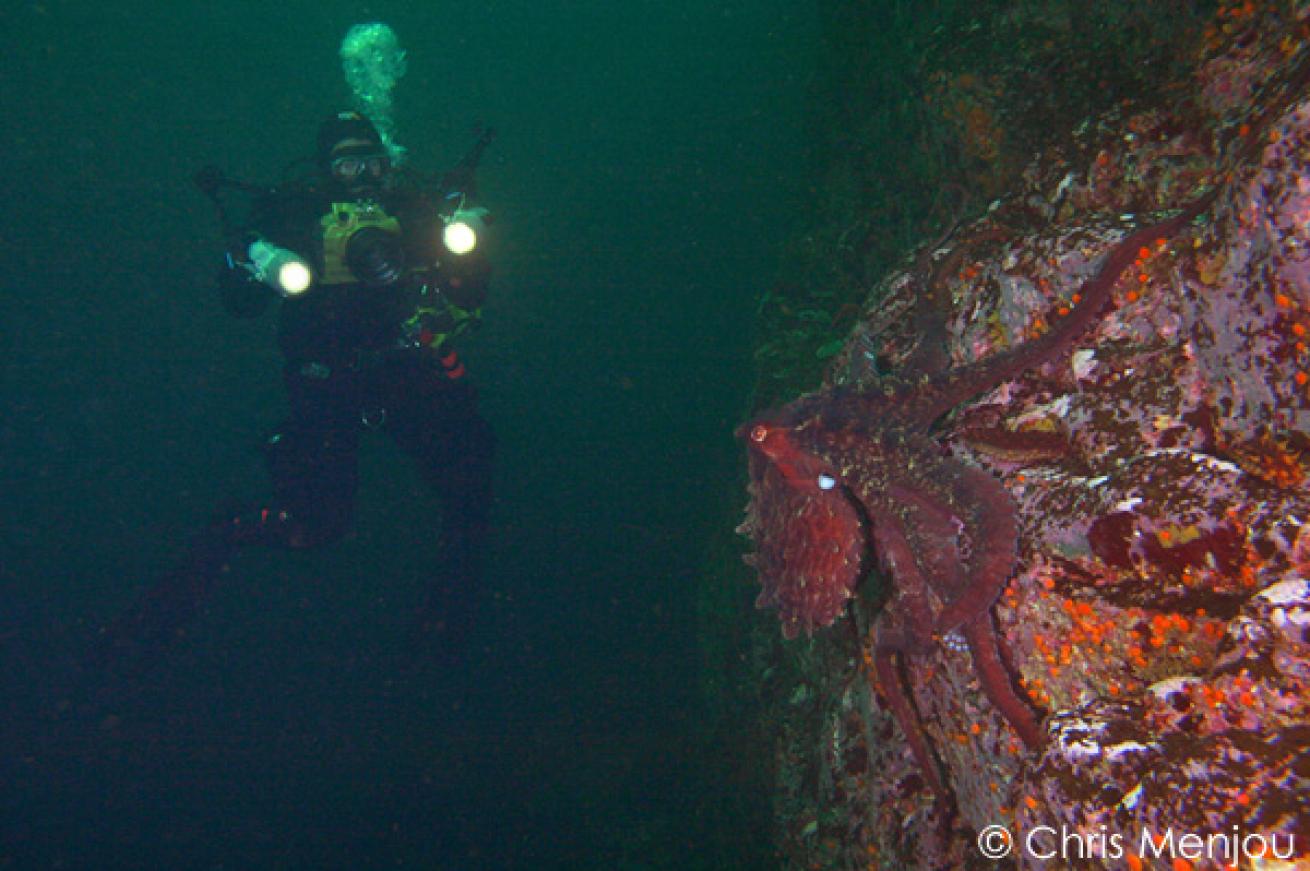
Chris MenjouOctopus diving
There is a bit of a story behind this image of a GPO and me, which my good friend Chris Menjou (pictured in the previous image) has graciously allowed me to share. We were diving together off of Mitlenatch Island, in Discovery Passage, British Columbia. Chris chose to shoot a wide-angle lens and was looking to shoot reef scenics. I had screwed on a macro, and went looking for nudibranchs and other small stuff. We were about 30 feet apart — me up on a rocky ridge, and him just below me, when I heard a repetitive, muffled, but distinctly human noise. I finished taking my shot, and then looked over to see Chris swimming up the rock wall, in hot pursuit of this giant Pacific octopus that was climbing the cliff toward me. He said afterward that the thing seemed to be interested (or possibly annoyed) by my strobes flashing up on the ridge and decided to come up to investigate. I am not going to lie — I was a bit nervous. This thing was H.U.G.E. — easily taller than me with its arms outstretched. There have been stories of these big octopuses wrapping themselves around divers to share the warmth, and I did not want to join the ranks. This fast-growing variety of octopus has been documented to reach 30 feet in arm span and 600 pounds, according to National Geographic. This one was significantly smaller than that, but big enough to earn our respect. Although I had the wrong lens for the job, I took a couple of pictures of it for proof and posterity as it stalled on the wall, before deciding it had enough of the paparazzi and descended again. Amazingly, in a jumble of rocks below, it squeezed itself into a small crack between two boulders and was gone.
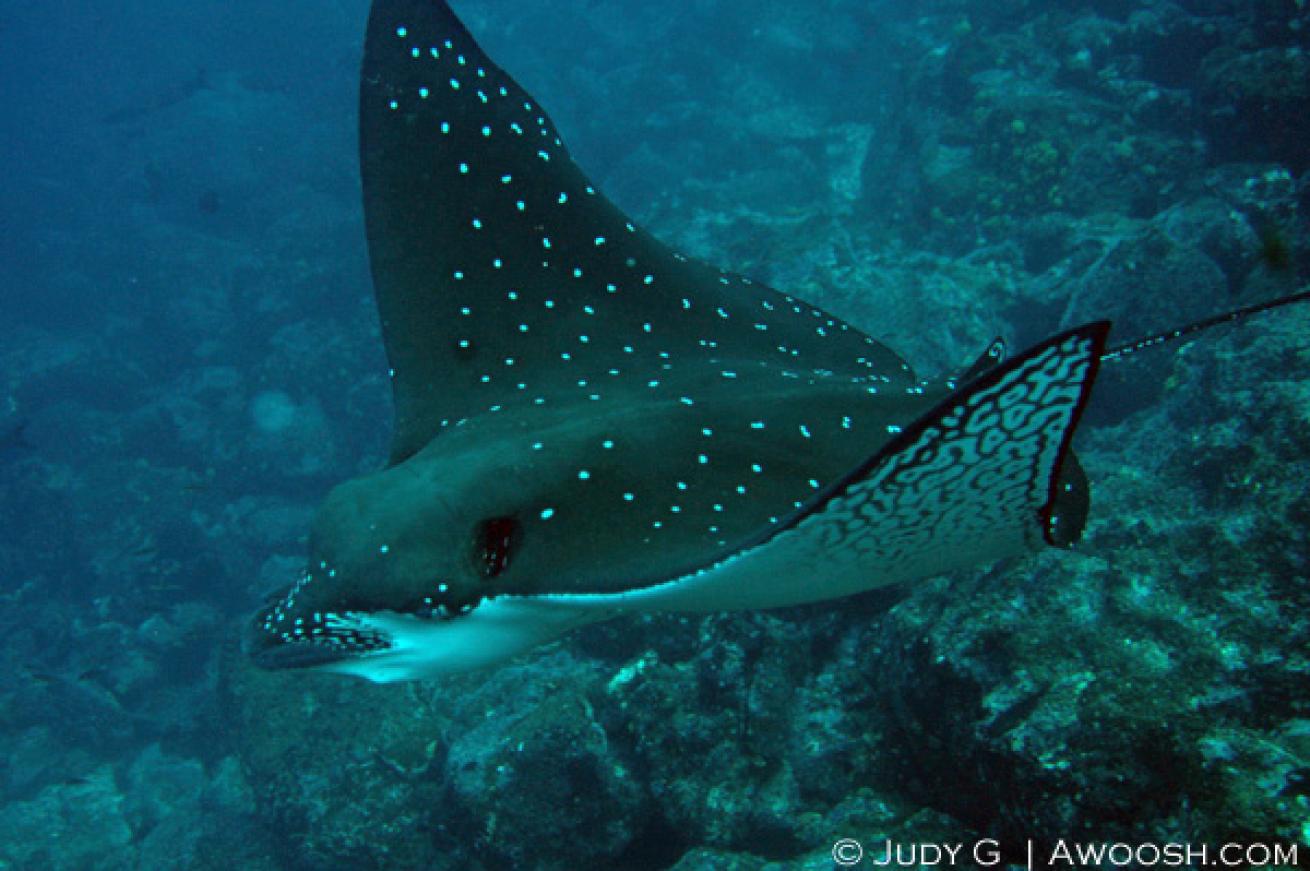
Judy GEagle ray diving
I captured this eagle ray image at Wolf Island in the Galapagos. I’ve seen eagle rays in several locations, both Caribbean and tropical Pacific, but this was something special. A large squadron of rays, numbering about a dozen, hung out just off the reef for most of the dive. Every now and then one would come into the reef, swim along its edge and then rejoin the gang. It was the closest I’ve ever been to one of these beautiful beasts and the only time I have seen such a large aggregation. Another place where schooling Eagle Rays can be seen is off the island of Cozumel, Mexico, from October to February.
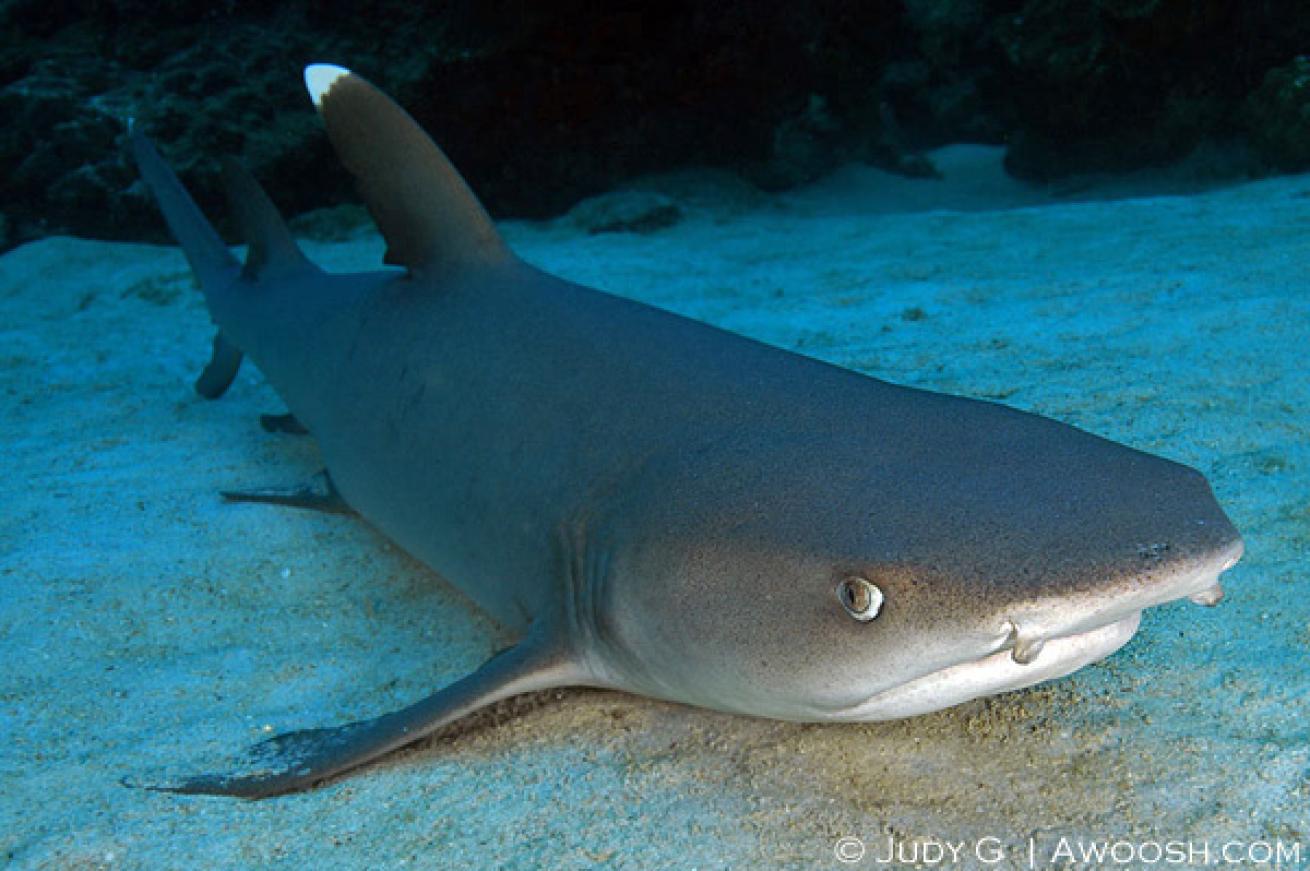
Judy GWhitetip shark diving
As opposed to the silvertip shark I shared earlier, this is a whitetip shark. These are lazy bottom dwellers, except when they are hunting at night. I captured this image at a site called Alcyone at Cocos Island in Costa Rica. There was a lot of these sharks in the sand on this famous site. In some places, there was a veritable parking lot of sharks, all laid out on the bottom in a group, and not seeming to be particularly worried about a close approach by us bubble-blowing bumblers. Night time was a different story — whitetip reefies were out en masse at a shallow site called Manuelita, in a frenzy of competitive feeding as they rousted out doomed fish and crustaceans attempting to hide in the reef.
I have always been up for seeing a manta ray, dolphin or turtle, but I must admit that, being of the Jaws generation, in my early diving days I was pretty phobic about sharks. Ironically, I had about 50 dives before I finally saw one — a big hammerhead sauntering by in San Salvador, Bahamas. By then, I had come to realize that seeing a shark was pretty special — something about which to be thrilled, not terrified.
Since those early, fearful days, I have ironically evolved into a shark-loving diver. I’ve even made several trips to a couple of global shark ‘meccas’ — the Galapagos Islands and Cocos Island in Costa Rica, with the expectation that I would dive with big animals — and hopefully lots of them. I wasn’t disappointed. Schooling hammerhead sharks appeared in both locations, plus large aggregations of big Galapagos sharks at Wolf Island.
And then there was the behemoth: Mr Big — the largest fish in the sea. I have been fortunate enough to have several encounters with these gentle giants, all at Darwin Island in the Galapagos. Whale sharks, unlike many of their carnivorous cousins, are plankton feeders and offer no harm to humans.
In all these experiences with sharks, numbering in the many hundreds of animals, if not thousands, I have never once felt threatened. I am pretty clear that sharks aren’t all that interested in us, and, unlike some of my experiences with underwater mammals, there is no sense of interaction or even curiosity. They are just there, doing what sharks do, which is generally cruising around, looking for easy pickings and coming into the reef periodically to get deloused at cleaning stations.
The only times I have felt that the encounters were a little too frisky have been during the legendary whitetip shark night dive at Manuelita Island in Costa Rica, where there is truly a riot of marauding sharks hell bent on hunting, and during some human-orchestrated shark feeds, where someone baits the sharks to bring them in so divers can get a closer look. During chumming, sharks can become quite pushy and persistent. I have come to believe that baiting sharks is not such a great practice — I think it creates a link in a food chain that is unnatural, and may encourage sharks to associate humans with food. That is not a good thing. I’ve dived at sites with operators who don’t feed sharks, and as soon as the boat pulls up to the mooring it’s like someone rang the dinner bell — the sharks come right up to the boat, much like Pavlov’s dogs salivated when a bell was rung. It can be exciting, but it’s not natural behavior. Sharks are normally fairly wary, and most tend to make a wide berth around underwater humans.
I can’t write about sharks without sharing a few words about the rapid and alarming decline of shark populations on the planet. It is well documented that sharks are being fished en masse, solely for the lucrative sale of their fins, with the rest of the animal being wastefully discarded. It is happening in oceans around the world. This is most shockingly evident in Asia. In my seven trips to Indonesia and Thailand thus far, I’ve only seen a handful of sharks. I’ve dived many ‘healthy’ coral reefs, in many regions, and where sharks should be abundant, they are instead worryingly absent. My trips to Galapagos and Cocos all happened more than six years ago when there was still apparently a very robust population of sharks. Since then, there have been many reports that rampant illegal poaching is occurring in both these locations, with the governments (Ecuador and Costa Rica respectively) that are custodial of these supposedly protected areas turning blind eyes to the issues.
Read: China Bans Shark Fin Soup from Weddings
There is a lot of media attention currently focused on shark finning, and several great non-profits groups are helping to increase consumer awareness in countries and communities in which shark fins are a delicacy. However, it remains uncertain whether the slaughter can be stopped in time, before many species of sharks become virtually extinct. In fact, now manta ray and whale-shark populations are being decimated because there are so few smaller sharks left, and the insatiable demand for shark fin in a bowl of broth leads fishermen to cross over into catching these species.
The gallery I’ve included in this photo essay attempts to share some of the very memorable moments I’ve had in the ocean with big animals — sharks, rays, turtles, sea lions and a really wild encounter with a very large giant Pacific octopus. There are still so many animals that I would love to see while diving — whales, dugongs (similar to the manatees of Florida, which I’d also love to see), dolphins and many more varieties of sharks.
But I think I’ll take a pass on diving with saltwater crocodiles.
More from Judy G
Cozumel's Most Fascinating Creatures | Cold Water Rocks! | Diving Indonesia's Komodo National Park

